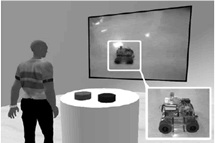WebLab Deusto
WebLab-Deusto
(http://weblab.deusto.es)
developed by University of Deusto is a didactical tool of teaching at the
university.
WebLab-Deusto offers seven types of
different experiments:
Xilinx
Programmable Logic Devices;
Microchip
PIC Microcontrollers;
Programmable
Mobile Robot;
Electronics
& instrumentation;
Logic
games and custom C++ application connected to an oscilloscope through GPIB;
Weblab-Submarine:
a real aquarium is remotely maintained.
"Programmable mobile
robot" course as an example is presented below:
The course aims to encourage student interest in STEM
through the use of two technological resources: virtual 3D environments (Second
Life) and mobile robot programming.
The WebLab Deusto used Second Life for merging SecBot
experiment. The SecBot experiment is an auto-programmable microbot which is
designed for this project. The SecBot microbot has its own programming
instructions memory that allows completely changing its behavior in run-time.
The SecBot has been built over the TERMINATOR SUMO ROBOT KIT by Lynxmotion
managed by an embedded platform based in a PIC18F4520 microcontroller.
Developing the remote experiment in Second Life
involves the following steps:
(1)
develop a project with the instructions that the microbot shall follow; high
level compilers (ej. MPLAB-C) or graphical programming interfaces (e.j.
flowcode) should be applied;
(2)
login to Second Life environment;
(3)
upload the .hex program and run it over WebLab-Deusto. Screen will show
microbot movement under the programmed orders (Fig.3).

NOTE: The
OLAREX consortium provides 2 learning supportive modules “Working as a computer –
Logic gates (Technology & Mathematics)” and “Farm Experiment: From an egg to a baby chick, step by step (Biology)” developed with WebLab-Deusto equipment.